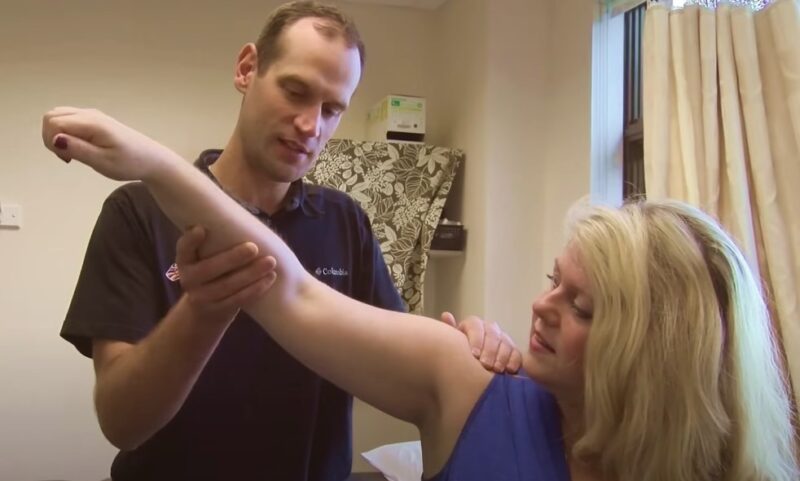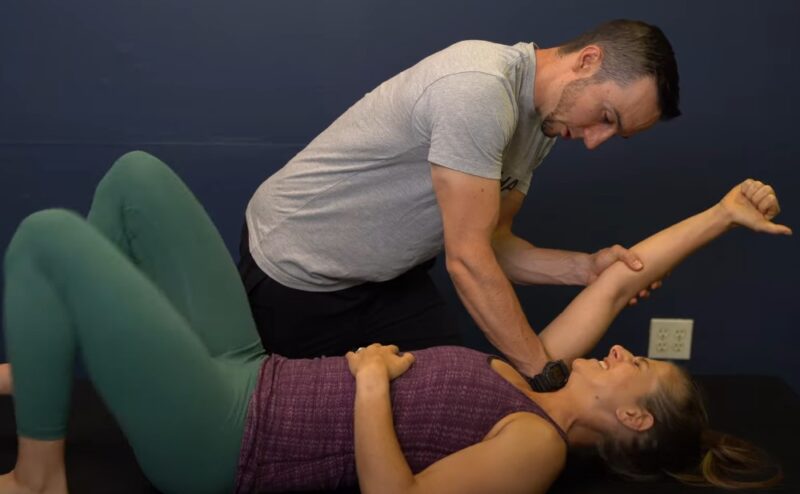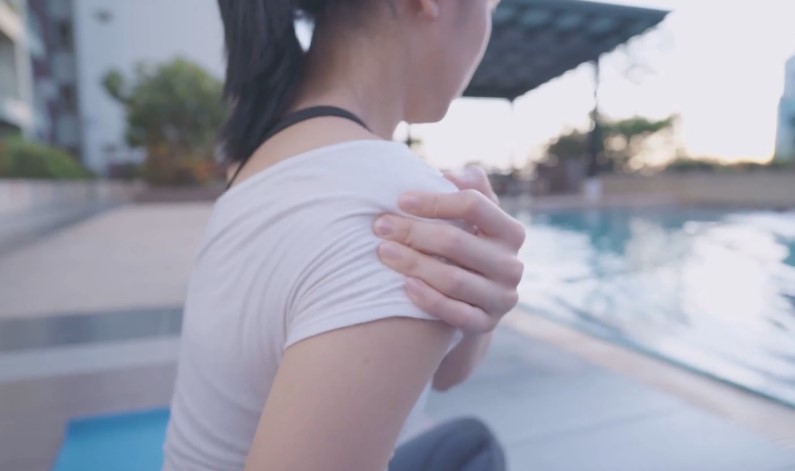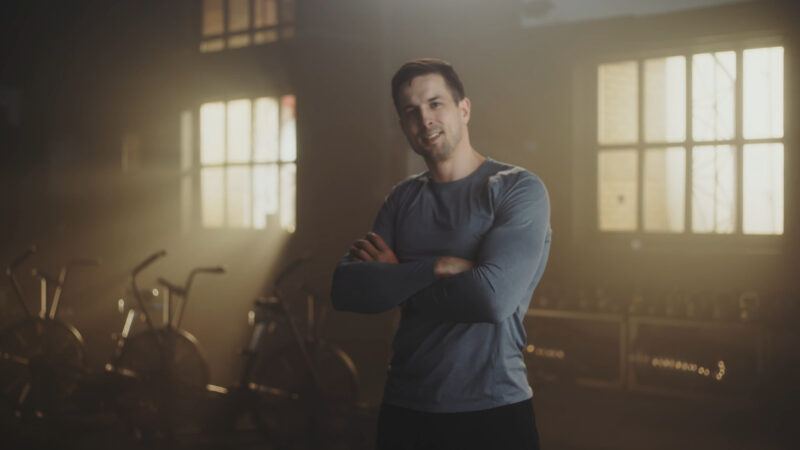Physiotherapy is the most effective non-surgical treatment for frozen shoulder (adhesive capsulitis), and when started early, it can fully restore arm mobility in over 90% of cases within 6 to 24 months. The key to success is consistent, guided movement therapy that gradually reduces joint stiffness and reintroduces range of motion without forcing it. Ignoring early symptoms or delaying therapy can significantly prolong recovery and increase long-term limitations.
Table of Contents
ToggleWhy Does It Happen?
Frozen shoulder is a condition where the shoulder joint capsule becomes inflamed, thickened, and tight, severely restricting motion. It usually develops in three stages:
- Freezing stage: Pain increases and range of motion decreases (can last 6–9 months).
- Frozen stage: Pain may lessen, but stiffness remains (4–12 months).
- Thawing stage: Gradual return of motion (6–24 months).
This condition is most common in people aged 40–65, especially those recovering from shoulder surgery or injury, or people with diabetes, thyroid disorders, or prolonged immobility. Women are more affected than men.
How Physiotherapy Helps — And Why It Works

Physiotherapy targets the root problem of frozen shoulder: joint capsule restriction. The shoulder’s ball-and-socket joint depends on a flexible capsule to allow full rotation and elevation. When the capsule tightens and inflames, only structured, progressive motion can break down adhesions and retrain the joint.
A physiotherapist will guide you through exercises that:
- Reduce inflammation in early phases
- Stretch the capsule safely
- Rebuild strength and control in the shoulder and upper back
- Reinforce proper biomechanics to prevent recurrence
Unlike medication, which only masks pain, or surgery, which carries risk, physiotherapy gradually restores function through controlled, natural movement. Most patients see progress within a few weeks if exercises are done consistently.
Phased Approach to Frozen Shoulder Therapy
| Stage | Symptoms | Physiotherapy Focus |
| Freezing | Severe pain, loss of motion | Pain management, gentle stretching, and posture work |
| Frozen | Less pain, significant stiffness | Capsule stretching, ROM (range of motion) drills |
| Thawing | Pain eases, motion returns | Strengthening, advanced mobility, and functional tasks |
Each phase calls for a tailored strategy. Trying to “push through” the pain too early can worsen inflammation and delay recovery. The role of the physiotherapist is to find the right level of challenge without aggravating the joint.
Common Physiotherapy Techniques for Frozen Shoulder
Treating frozen shoulder is not a one-size-fits-all process — it requires a thoughtful combination of manual therapy, therapeutic exercises, and guided progression tailored to the individual’s phase of recovery. Whether you’re just beginning to lose mobility or are in the thawing phase and trying to regain full use, physiotherapists rely on several cornerstone methods to restore shoulder function.
Here are some of the most widely used and effective approaches:
1. Passive Range-of-Motion (PROM) Exercises
In the early freezing stage — when pain is intense and movement is extremely limited — PROM exercises are essential. The physiotherapist gently moves your arm through its available range without requiring any effort from you. These movements help maintain joint health, reduce the risk of permanent stiffness, and encourage synovial fluid movement for joint lubrication.
This technique is particularly helpful when a patient is unable to move due to pain. It also plays a vital role in effective physiotherapy techniques for seniors, as it allows gentle mobilization in cases where strength or endurance may be compromised due to age-related conditions or frailty.
2. Capsular Stretching Techniques
The hallmark of frozen shoulder is a thickened, tight joint capsule. To reverse this, therapists introduce stretching maneuvers focused on elongating that capsule and restoring flexibility. Some common stretches include:
- Cross-body shoulder stretch: Gently pulls the affected arm across the chest.
- Doorway stretch: Targets the front capsule and chest muscles using the frame of a doorway.
- Overhead towel stretch: Involves using the opposite arm to pull the frozen arm upward via a towel, increasing range gradually.
Patients must hold these stretches for at least 15–30 seconds and repeat them multiple times daily for real gains. These stretches are adjusted in intensity and complexity based on the patient’s tolerance and recovery phase.
3. Pendulum Exercises
Pendulum swings are a gentle, early-stage technique that relies on gravity rather than force. Patients lean forward slightly, let the affected arm dangle, and gently swing it in circles or side-to-side. These motions relax the shoulder muscles, reduce intra-articular pressure, and improve blood flow — all of which help with pain relief.
This exercise is easy to do at home and is often prescribed as a first-step intervention while inflammation subsides.
4. Scapular Stabilization and Postural Training
One overlooked aspect of frozen shoulder therapy is the role of the scapula (shoulder blade). When shoulder joint mobility is restricted, the body compensates with poor posture and altered scapular movement, which can lead to secondary neck or back pain.
Physiotherapists focus on strengthening key muscles such as the serratus anterior, trapezius, and rhomboids through targeted movements. Examples include wall push-ups, scapular squeezes, and resistance band retractions. Better scapular stability leads to more efficient shoulder movement and reduced stress on the frozen joint.
5. Heat Therapy and TENS (Transcutaneous Electrical Nerve Stimulation)
Thermal modalities are often used before stretching or manual therapy to help relax the tissue. Moist heat applied for 15 minutes increases tissue elasticity and reduces muscle guarding. For pain management, TENS uses low-voltage electrical pulses to stimulate nerves and block pain signals.
Both heat and TENS are frequently recommended for older adults, making them effective physiotherapy techniques for seniors dealing with frozen shoulder or other joint conditions, especially when medications are limited by comorbidities.
6. Strengthening and Resistance Training
Once patients enter the thawing stage — when pain decreases and motion starts to return — strengthening becomes the focus. Resistance bands, light weights (1–3 lbs), and bodyweight exercises help rebuild endurance in the rotator cuff, deltoid, and upper back muscles.
Some foundational strengthening moves include:
- External rotations with bands
- Wall climbs (finger walking)
- Shoulder flexion with dumbbells (as tolerated)
Strength work must be done cautiously and only after the joint is mobile enough to allow it. Rushing this phase can cause re-injury or inflammation, especially in aging patients with osteoporosis or arthritis.
Timeline for Recovery With Physiotherapy

While every patient’s progress varies, the following is a general timeline of what to expect with a consistent and structured physiotherapy program:
| Timeline (Months) | Expected Progress |
| 0–3 months | Focus on reducing pain and inflammation. Gentle ROM and pendulum exercises. |
| 4–6 months | Noticeable improvement in mobility. Begin light stretches and scapular work. |
| 6–12 months | Transition to strengthening. Functional tasks (reaching overhead, dressing) improve. |
| 12–24 months | Full return of mobility and strength in most patients. Occasional stiffness may remain. |
Consistency is the most important factor. Patients who stick to their home exercise program and attend regular sessions are far more likely to regain full function. Missing sessions or stopping prematurely often leads to prolonged stiffness or even chronic shoulder dysfunction.
What Happens If You Don’t Do Physiotherapy?
Frozen shoulder is not just a painful nuisance — if untreated, it can cause long-lasting complications that extend beyond the joint itself. Some of the risks of skipping physiotherapy include:
- Chronic loss of shoulder mobility, affecting daily activities like driving or dressing
- Persistent pain, especially at night or during overhead tasks
- Compensatory overuse of the opposite arm or adjacent joints, leading to neck, elbow, or wrist pain
- Secondary rotator cuff tears, due to altered mechanics or muscle imbalances
- Increased likelihood of needing invasive procedures, such as:
- Manipulation Under Anesthesia (MUA) — forcing movement while sedated
- Arthroscopic Capsular Release — surgically removing adhesions
Both procedures require post-op physiotherapy anyway, so early intervention often avoids surgery entirely.
Tips for Getting the Best Results

Physiotherapy is most effective when approached as a long-term commitment, not a quick fix. These strategies will help you get the most out of your treatment:
- Start early: If your shoulder starts to feel stiff or painful for weeks at a time, don’t wait — book a physiotherapy consult before the capsule locks down.
- Stick to your home program: Daily practice matters. Even five minutes of targeted exercise can make a difference if done consistently.
- Avoid forcing movement: Stretching should feel challenging, not painful. Forcing motion too early can cause inflammation and slow recovery.
- Use heat before therapy: Applying moist heat (not dry heat) before stretching loosens tissue and improves flexibility.
- Trust the process: Frozen shoulder recovery is notoriously slow. Expect months of gradual improvement, not rapid changes.
Signs That You’re Making Real Progress
It’s easy to get discouraged with a condition that moves slowly, but here are clear signs that your shoulder is healing and your physiotherapy is working:
- You’re able to raise your arm higher than last week, even by a few degrees
- Daily tasks like washing your hair or fastening a seatbelt are becoming easier
- Pain at night has reduced, and you’re sleeping better
- Movements feel less stiff and more fluid
- You catch yourself using your affected arm without thinking about it
Conclusion
Frozen shoulder is a reversible condition — but only with active treatment. Physiotherapy remains the most reliable, proven method for restoring full arm mobility without surgery. The success of treatment depends on early intervention, a tailored plan, and steady commitment over several months.
By following structured phases — from pain management to stretching to strengthening — and using techniques like PROM, capsular stretches, scapular stabilization, and resistance training, most patients can regain full use of their shoulder. Delaying care, skipping exercises, or pushing too hard too soon all increase the risk of long-term limitations or complications.
The bottom line: start physiotherapy as soon as symptoms appear, follow the plan exactly as prescribed, and expect progress — not overnight, but steadily. In most cases, full mobility returns within 6 to 24 months without the need for surgical intervention.
Related Posts:
- How To Recover From Muscle Inflammation Without Medication
- Lower Back Pain While Running? Here's What You Need to Know
- Tendonitis, Shin Splints, and Other Common Leg…
- How Can You Start a Career as a Running Coach?
- 25 Simple Running Motivation Tips To Get You Moving
- How Long Does It Take to Train for a Half Marathon?







